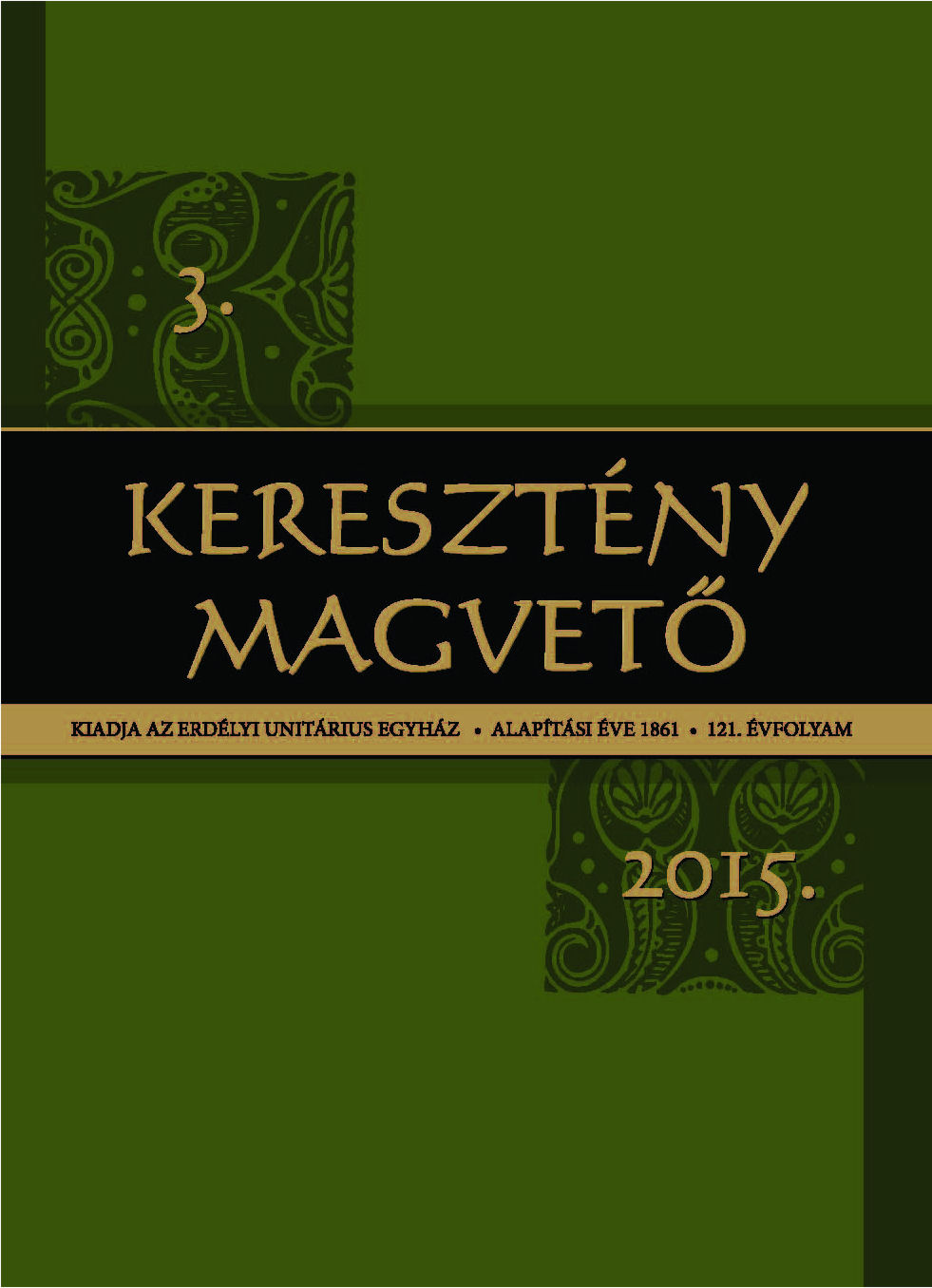17. századi, csak unitárius forrásból ismert gyülekezeti ének (Kiegészítések és megfigyelések)
New Findings About the Sources of 17th Century Unitarian Hymns
Author(s): Andrea Hevesi Subject(s): History, Cultural history
Published by: Erdélyi Unitárius Egyház
Keywords: 17th Century Unitarian Hymns; Miklós Bogáti Fazekas; Jan Kochanowski; poetic techniques; unknown author(s); psalm translators
Summary/Abstract: This paper discusses the Unitarian minister Miklós Bogáti Fazekas’ (1548– 1592) paraphrases of the psalms and the source materials for the 17th century Unitarian hymns. Th e aim is to point out that the Bogáti psalms, which are known from Antitrinitarian sources, were popular in the 17th century Unitarian communities – in contrast to what has been stated in the secondary literature previously. The moderate use of the Bogáti psalms as the basis for Unitarian hymns can be explained by other theoretical reasons detailed in the paper and summarized here.The 17th century Hungarian translations and adaptations of the psalms of the great Polish poet, Jan Kochanowski (1530–1584) were brought to light through the works of Géza Papp (1915–2013). By examining these translations poetically and rhetorically, it becomes clear that they have special characteristics that are only rarely used in the old, i. e. 16th century, Hungarian literature, forexample: use of anaphoric and cataphoric structures, acrostic summarization, frequent line overlappings, apo koinu constructions, and last-verse harmonizations are typical attributes of the translations.The examination of these 17th century translations of the psalms and of the 17th century Unitarian hymns written by unknown author(s) show these same characteristics.Based on the detailed examination included in this paper, it can be stated that the translations of Kochanowski’s psalms and the Unitarian hymns by the 17th century author(s) must have been the work of the same person, whose identity remains unknown. It is clear though that he applied poetic techniques that are in many aspects different from those used by his 17th century contemporaryauthors and translators of psalms.
Journal: KERESZTÉNY MAGVETŐ
- Issue Year: 121/2015
- Issue No: 3
- Page Range: 348-374
- Page Count: 27
- Language: Hungarian

